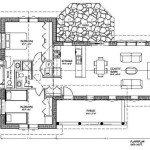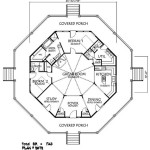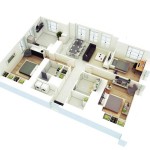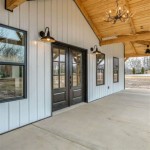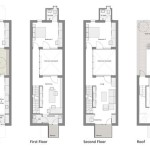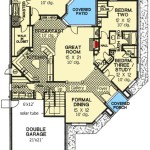Small house floor plans are architectural blueprints that outline the layout and dimensions of homes with limited square footage. They are designed to maximize space efficiency while providing comfortable and functional living areas. Whether it’s a cozy cottage or a minimalist apartment, small house floor plans offer a cost-effective and eco-friendly option for those who prefer a more compact lifestyle.
From studio apartments to two-bedroom homes, there is a wide range of small house floor plans available to suit different needs and preferences. They often feature open-concept designs that create a sense of spaciousness, as well as smart storage solutions to keep belongings organized. By utilizing vertical space through lofts and built-in shelves, small house floor plans can accommodate all the essential elements of a home without sacrificing comfort or style.
In the following sections, we will explore the benefits and challenges of small house floor plans, discuss the key considerations when choosing one, and showcase inspiring examples of small homes that demonstrate the transformative power of well-designed floor plans.
When designing small house floor plans, there are several important points to consider:
- Maximize natural light
- Create open and airy spaces
- Utilize vertical space
- Incorporate smart storage
- Define spaces without walls
- Choose multifunctional furniture
- Consider outdoor living areas
- Keep it simple
By carefully considering these factors, it is possible to create small house floor plans that are both functional and stylish.
Maximize natural light
Natural light is essential for creating a healthy and inviting home. It can improve our mood, boost our productivity, and reduce our energy consumption. When designing a small house floor plan, it is important to maximize natural light to make the space feel larger and more airy.
- Place windows strategically
The best way to maximize natural light is to place windows strategically throughout the home. Windows should be placed on all sides of the house, if possible, to allow light to enter from multiple directions. Larger windows will let in more light than smaller windows, so consider using large windows in areas where you want the most light, such as the living room and kitchen.
- Use skylights and solar tubes
Skylights and solar tubes are a great way to bring natural light into homes that have limited window space. Skylights are installed in the roof and allow light to enter from above. Solar tubes are reflective tubes that collect sunlight from the roof and redirect it into the home.
- Choose light-coloured finishes
Light-coloured finishes reflect light, which can make a space feel larger and brighter. When choosing paint colours, wallpaper, and flooring, opt for light colours that will help to bounce light around the room.
- Avoid blocking windows
When placing furniture and other objects in your home, be careful not to block windows. Even a small object can block a significant amount of light. Keep furniture and other objects away from windows so that light can flow freely into the space.
By following these tips, you can maximize natural light in your small house floor plan and create a space that is both inviting and energy-efficient.
Create open and airy spaces
One of the most important things to consider when designing a small house floor plan is how to create open and airy spaces. This can be achieved through a variety of design techniques, including:
- Use an open floor plan
An open floor plan is a layout in which the main living areas of the home (living room, dining room, and kitchen) are not separated by walls. This creates a more spacious and airy feel than traditional floor plans with closed-off rooms.
- Use large windows and doors
Large windows and doors allow natural light to enter the home and make the space feel more open and inviting. When choosing windows and doors, opt for larger sizes and consider using floor-to-ceiling windows to maximize the amount of natural light that enters the home.
- Use light colours
Light colours reflect light, which can make a space feel larger and brighter. When choosing paint colours, wallpaper, and flooring, opt for light colours that will help to bounce light around the room.
- Avoid clutter
Clutter can make a space feel smaller and more cramped. When decorating your home, choose furniture and accessories that are the right size for the space and avoid overcrowding the room.
By following these tips, you can create open and airy spaces in your small house floor plan that will make the home feel larger and more inviting.
Utilize vertical space
Vertical space is often overlooked when designing small house floor plans, but it can be a valuable asset. By utilizing vertical space, you can create the illusion of more space and make your home feel more open and airy.
- Build up
One of the best ways to utilize vertical space is to build up. This can be done by adding a loft, a second story, or even a basement. Lofts are a great way to add extra living space or storage without taking up too much floor space. Second stories can be used to create additional bedrooms, bathrooms, or offices. Basements can be used for a variety of purposes, such as storage, recreation, or even additional living space.
- Use tall furniture
Another way to utilize vertical space is to use tall furniture. Tall bookcases, cabinets, and shelves can provide storage without taking up too much floor space. You can also use vertical storage solutions, such as hanging shelves and baskets, to store items off the floor.
- Hang artwork and mirrors
Hanging artwork and mirrors on the walls is a great way to add visual interest to a space and make it feel larger. Artwork and mirrors can also be used to create the illusion of height, which can make a room feel more spacious.
- Use curtains and blinds
Curtains and blinds can be used to control the amount of light that enters a room, but they can also be used to create the illusion of height. By hanging curtains or blinds from the ceiling to the floor, you can make a room feel taller and more spacious.
By following these tips, you can utilize vertical space in your small house floor plan and create the illusion of more space.
Incorporate smart storage
Storage is always a challenge in small house floor plans, but there are a number of smart storage solutions that can help you maximize space and keep your home organized.
Use built-in storage
Built-in storage is a great way to add storage without taking up too much floor space. Built-in shelves, cabinets, and drawers can be customized to fit any space, and they can be used to store a variety of items, from books and clothes to kitchen supplies and cleaning equipment.
Use vertical storage
Vertical storage is another great way to maximize space in a small home. Tall bookcases, cabinets, and shelves can be used to store items off the floor, and they can be placed in any room in the house. You can also use vertical storage solutions, such as hanging shelves and baskets, to store items on the walls or in closets.
Use multi-purpose furniture
Multi-purpose furniture is a great way to save space and add functionality to your home. Ottomans with built-in storage can be used for seating and storage, and coffee tables with drawers can be used for storage and display. You can also find beds with built-in storage, which can be a great way to save space in a small bedroom.
Use under-utilized spaces
There are a number of under-utilized spaces in a small home that can be used for storage. For example, the space under the stairs can be used for a closet or storage shelves, and the space under the bed can be used for storage bins or drawers.
By following these tips, you can incorporate smart storage into your small house floor plan and keep your home organized and clutter-free.
Define spaces without walls
In traditional home design, walls are used to divide the home into different rooms. However, in small house floor plans, it is often necessary to find creative ways to define spaces without using walls.
- Use furniture to define spaces
Furniture can be used to create both physical and visual barriers between different spaces in a home. For example, a sofa can be used to divide the living room from the dining room, or a bookcase can be used to create a separation between the living room and the entryway.
- Use rugs to define spaces
Rugs can also be used to define spaces in a home. A rug can be placed under the dining table to create a visual boundary between the dining room and the living room, or a rug can be placed in the entryway to create a welcoming space.
- Use curtains or screens to define spaces
Curtains or screens can be used to create temporary or semi-permanent barriers between different spaces in a home. Curtains can be hung from the ceiling to the floor to create a separation between the bedroom and the living room, or a screen can be used to create a private space for a home office.
- Use different flooring materials to define spaces
Different flooring materials can be used to create a visual distinction between different spaces in a home. For example, hardwood flooring can be used in the living room, while tile flooring can be used in the kitchen. This will help to create a sense of separation between the two spaces.
By using these techniques, it is possible to define spaces in a small home without using walls. This can help to create a more open and airy feel, and it can also make the home feel more spacious.
Choose multifunctional furniture
Multifunctional furniture is a great way to save space and add functionality to a small home. By choosing furniture that can serve multiple purposes, you can reduce the amount of furniture you need and free up valuable floor space.
There are many different types of multifunctional furniture available, including:
- Sofa beds: Sofa beds are a great way to add extra sleeping space to a small home. They can be used as a couch during the day and a bed at night, which can save you the space needed for a separate bed.
- Ottoman with storage: Ottomans with storage are a great way to add extra seating and storage to a small home. They can be used to store blankets, pillows, toys, or other items, and they can also be used as a footrest or coffee table.
- Coffee tables with drawers: Coffee tables with drawers are a great way to add extra storage to a small home. They can be used to store books, magazines, remotes, or other items, and they can also be used as a place to display decorative items.
- Beds with built-in storage: Beds with built-in storage are a great way to add extra storage to a small bedroom. They can be used to store clothes, shoes, or other items, and they can also be used as a place to display decorative items.
When choosing multifunctional furniture, it is important to consider the following factors:
- The size of the furniture: Make sure that the furniture is the right size for the space you have available. You don’t want to choose furniture that is too large or too small for the space.
- The style of the furniture: Choose furniture that matches the style of your home. You don’t want to choose furniture that is too modern or too traditional for the space.
- The functionality of the furniture: Make sure that the furniture is functional for your needs. You don’t want to choose furniture that is not comfortable or that does not meet your needs.
By following these tips, you can choose multifunctional furniture that will save you space and add functionality to your small home.
Multifunctional furniture can be a great way to make the most of a small space. By choosing furniture that can serve multiple purposes, you can reduce the amount of furniture you need and free up valuable floor space. This can make your home feel more spacious and inviting.
Consider outdoor living areas
Outdoor living areas can be a valuable addition to any home, but they are especially important for small homes. Outdoor living areas can provide extra space for entertaining, relaxing, or simply enjoying the fresh air. When designing a small house floor plan, it is important to consider how you can incorporate an outdoor living area into the design.
- Use a patio or deck
A patio or deck is a great way to create an outdoor living area in a small home. Patios and decks can be used for a variety of purposes, such as dining, entertaining, or simply relaxing. They can be built from a variety of materials, such as wood, concrete, or pavers. When choosing a material for your patio or deck, it is important to consider the climate and the amount of maintenance you are willing to do.
- Use a balcony or porch
A balcony or porch is another great way to create an outdoor living area in a small home. Balconies and porches are typically smaller than patios and decks, but they can still be used for a variety of purposes, such as relaxing, reading, or enjoying the view. Balconies and porches can be built from a variety of materials, such as wood, metal, or concrete. When choosing a material for your balcony or porch, it is important to consider the climate and the amount of maintenance you are willing to do.
- Use a courtyard
A courtyard is a great way to create a private outdoor living area in a small home. Courtyards are typically enclosed by walls or fences, which can provide privacy and protection from the elements. Courtyards can be used for a variety of purposes, such as dining, entertaining, or simply relaxing. They can be landscaped with plants, trees, and water features to create a beautiful and inviting space.
- Use a rooftop terrace
A rooftop terrace is a great way to create an outdoor living area in a small home with limited outdoor space. Rooftop terraces can be used for a variety of purposes, such as dining, entertaining, or simply relaxing. They can be landscaped with plants, trees, and water features to create a beautiful and inviting space.
By following these tips, you can consider outdoor living areas when designing a small house floor plan. Outdoor living areas can provide extra space for entertaining, relaxing, or simply enjoying the fresh air, and they can also add value to your home.
Keep it simple
When designing a small house floor plan, it is important to keep it simple. This means avoiding complex layouts and unnecessary details. A simple floor plan will be easier to build and will make the space feel more spacious and inviting.
- Use a simple layout
A simple layout is one that is easy to understand and navigate. Avoid using complex layouts with multiple hallways and turns. Instead, opt for a layout that is straightforward and flows well.
- Use simple shapes
When designing the rooms in your home, use simple shapes such as squares and rectangles. Avoid using complex shapes, such as circles or octagons. This will make the space feel more spacious and inviting.
- Use a limited number of materials
When choosing materials for your home, use a limited number of materials. This will create a more cohesive look and feel. Avoid using too many different materials, as this can make the space feel cluttered and busy.
- Use a neutral color palette
When choosing colors for your home, use a neutral color palette. This will create a more calming and inviting space. Avoid using too many bright or bold colors, as this can make the space feel smaller and more cramped.
By following these tips, you can keep your small house floor plan simple and create a space that is both stylish and functional.










Related Posts


